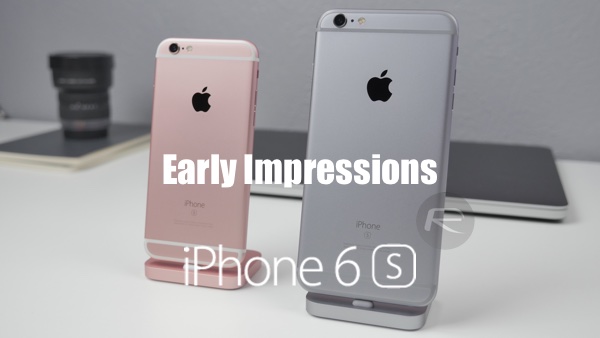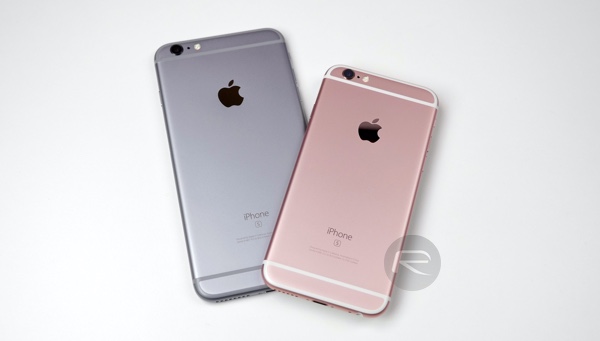Unless you have been living under a rock, you probably know that Apple recently launched its new flagship devices the iPhone 6s and the iPhone 6s Plus, but what really has changed? At first glance, you cannot identify if somebody has an iPhone 6 or an iPhone 6s, unless you look closely. On the back of the iPhone 6s and 6s Plus you have a letter “S” located under the iPhone logo at the bottom. And thanks to the E-Label Act, FCC labeling is now gone from the back of the iPhone. It looks more clean and neat.

When physically comparing both current and last generation iPhones, the iPhone 6s is 0.2 mm taller, 0.1 mm wider, 0.2 mm thicker, and 14 grams heavier. Comparing the Plus models, the iPhone 6s Plus is 0.1 mm taller, 0.1 mm wider, 0.2 mm thicker, and 20 grams heavier. You can noticeably tell the weight difference when holding them. While many think this is because of the new 7000 Series aluminum casing that Apple opt for this time around, it is actually due to the all new 3D Touch technology embedded in the display. 3D Touch is Apple’s new way of interacting with your phone. iPhone can now sense how much pressure you apply to the display giving you more options. It is pretty neat. Everything that has changed takes place internally.

The new iPhone 6s is also 1.5x faster than previous generation models, 6 and 6 Plus. It rocks Apple’s new 64-bit A9 chip giving you a 70% faster CPU and 90% faster GPU. The new chip definitely helps in app loading time, which is noticeably faster now than previous-gen iPhones.
Embedded inside the A9 chip comes the new M9 motion coprocessor that connects to the accelerometer, compass, gyroscope, and barometer for a wide range of fitness tracking capabilities. It also allows Siri to always stay on for when you say a simple “Hey Siri” voice command. This will wake up your device even with the device locked. This is a pretty cool feature.
There’s also 2GB RAM, which in my tests makes for a huge difference. Gone are the reloading tabs in Safari, refreshing of backgrounded apps, and general lag in the OS.

Another change is the cameras. It now comes equipped with a new 12MP sensor with advanced pixel technology for the iSight camera that by default takes Live Photos, and a 5MP FaceTime HD camera for those selfies. The iSight camera gives you the capabilities to now record up to 4K video at 30fps. It also supports 1080p HD video recording at 30fps or 60fps, and 720p HD video recording at 30fps. The 240fps and 120fps Slo-Mo is there too. The 5MP FaceTime camera now gives you video recording up to 720p HD at 30fps. It also steps up your selfie game. With the improved 5MP FaceTime HD camera, it also includes a Retina Flash which makes your display flash three times brighter than usual thanks to a custom display chip. It provides you with the best true tone photo when in low light condition or whenever you need that flash for the perfect selfie.
Touch ID, too, has gotten an improvement. It uses a 2nd generation fingerprint sensor giving you a very fast and responsive new Touch ID experience. Trust me, it is noticeably fast! When using it to unlock my device, it barely gave me enough time to peak at the digital clock on the lock screen.
These are some of the key differences between both the current and last generation models. With these improvements, will it make you change your mind of what you currently think of the new iPhone?
Be sure to watch the full video below showing our hands-on and early impressions with an iPhone 6s in Rose Gold color and iPhone 6s Plus in Space Gray:
Subscribe to our YouTube channel for more videos.
Stay tuned for more iPhone 6s video, including our full review, coming soon! Also don’t forget to let us know what you would like to see in a future iPhone 6s video in the comments section below. It could be about a specific feature of iPhone 6s, or a comparison of it with any other phone you like.
You may also like to check out:
You can follow us on Twitter, add us to your circle on Google+ or like our Facebook page to keep yourself updated on all the latest from Microsoft, Google, Apple and the Web.

